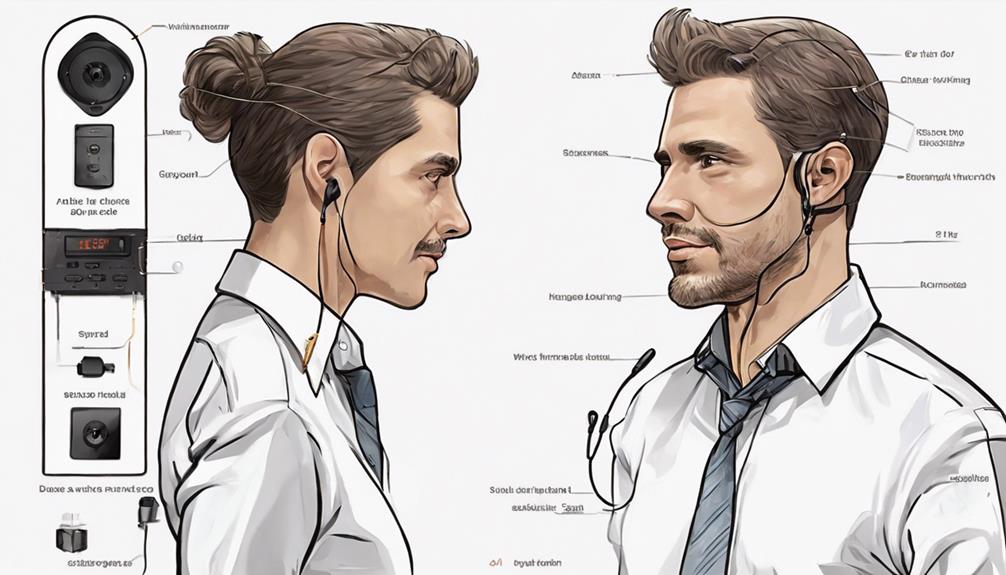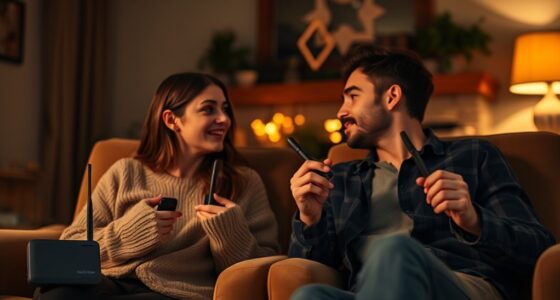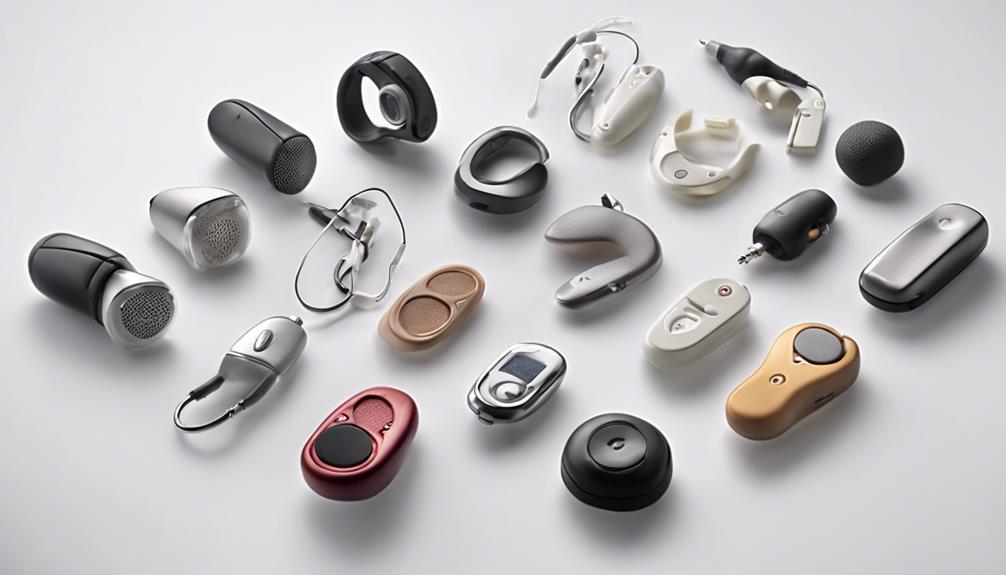Let’s explore three examples of assistive listening technologies created to enhance hearing.
Hearing Loop Systems, FM Systems, and Infrared Systems each offer unique features to enhance sound transmission.
From electromagnetic energy to wireless sound transmission, these devices cater to various settings and aim to improve communication effectiveness.
But how do they work, and which one might be the best fit for your specific needs? Let's uncover the details together.
Key Takeaways
- Hearing loop systems, FM systems, and Infrared systems enhance sound clarity for individuals with hearing loss.
- These systems are crucial in venues like theaters, churches, classrooms, and group meetings.
- Assistive devices offer clear reception, reduce background noise, and cater to different needs and settings.
- They amplify sound without interference, provide versatility, and improve auditory experiences in various environments.
Hearing Loop Systems
Hearing loop systems utilize electromagnetic energy to transmit sound directly to telecoils in hearing aids, enhancing sound clarity for individuals with hearing loss. These systems, also known as induction loop systems, are crucial assistive listening devices found in venues like theaters and churches.
Telecoil-equipped hearing aids pick up the electromagnetic signals generated by the hearing loop receiver, converting them into improved sound quality. By cutting out background noise and focusing solely on the desired audio source, hearing loop systems significantly improve sound transmission for those with hearing aids or cochlear implants.
This direct communication pathway enhances the listening experience in various settings, making it easier for individuals with hearing loss to engage in conversations, enjoy performances, and participate in religious services. The seamless integration between hearing loop systems and telecoil-equipped hearing aids highlights the importance of these assistive devices in facilitating clear and effective communication for individuals with hearing impairments.
FM Systems

Utilizing radio waves to transmit sound wirelessly, FM systems offer clear reception and enhanced auditory experiences in various settings such as group meetings, classrooms, and churches. These systems are versatile and work effectively in both indoor and outdoor environments. Here are some key points about FM systems:
- FM systems transmit sound wirelessly via radio waves for clear reception.
- They're commonly used in group meetings, classrooms, and churches.
- FM systems are suitable for both indoor and outdoor settings.
- These systems help users hear better by amplifying sound without background noise.
- FM systems can be used with or without hearing aids to enhance the listening experience.
FM systems play a vital role in improving sound clarity and reducing the impact of background noise, making them valuable tools for individuals seeking to enhance their auditory capabilities in various social and educational settings.
Infrared Systems
In indoor settings like theaters and churches, Infrared Systems transmit sound wirelessly via invisible light beams, providing clear reception without outside interference. These systems are ideal for indoor use, especially in places where traditional sound systems may not suffice due to background noise or acoustics. Infrared systems are commonly found in personal TV listening devices, offering individuals with hearing loss the opportunity to enjoy television without disturbing others.
One of the significant advantages of Infrared Systems is their ability to deliver high-quality sound in small to medium-sized venues. The technology ensures that the audio is wirelessly transmitted directly to the listener, enhancing the overall listening experience. This makes them particularly useful in environments like churches, where clarity of speech and music is crucial for congregants.
Frequently Asked Questions
Which Devices Can Be Used to Improve Hearing?
We can improve hearing by utilizing a variety of devices tailored to different settings and needs. These include:
- FM systems for group settings
- Infrared systems for indoor environments
- Personal amplified systems for one-on-one conversations
- Bluetooth systems for versatility
- Hearing loops for enhanced clarity in noisy places
Each device offers unique benefits, enhancing sound transmission wirelessly to cater to diverse hearing requirements.
What Is a Device That Helps in Hearing?
We believe a device that helps in hearing is an Assistive Listening Device (ALD). These tools are designed to improve sound transmission for individuals with hearing loss.
ALDs come in various types, such as hearing loop systems, FM systems, and infrared systems. Telecoils in hearing aids receive signals from ALDs like hearing loops for clearer sound.
ALDs are essential for individuals with hearing loss to access and engage in various activities effectively.
What Assistive Devices Are Available for Patients Who Have Decreased Hearing?
We've an array of assistive listening devices available for patients with decreased hearing. These devices cater to various settings and offer versatility, clarity, and improved sound reception.
From audio induction loops to Bluetooth systems, our selection ensures enhanced listening experiences for users with or without hearing aids. Each device is designed to provide a tailored solution for different listening situations, making communication easier and more accessible for those with hearing loss.
Which Electrical Device Helps to Improve Hearing Ability?
We can improve hearing ability with various electrical devices. These tools utilize technology to enhance sound clarity and reduce background noise, providing customized experiences for individuals with hearing loss.
Conclusion
In conclusion, assistive listening devices offer individuals with hearing loss the opportunity to fully engage in their surroundings. From Hearing Loop Systems to FM Systems and Infrared Systems, there are various options available to cater to different settings and needs.
These devices truly open doors for better communication and connection, allowing individuals to 'hear things loud and clear' in any environment. Embrace the power of technology and enhance your hearing experience today.











